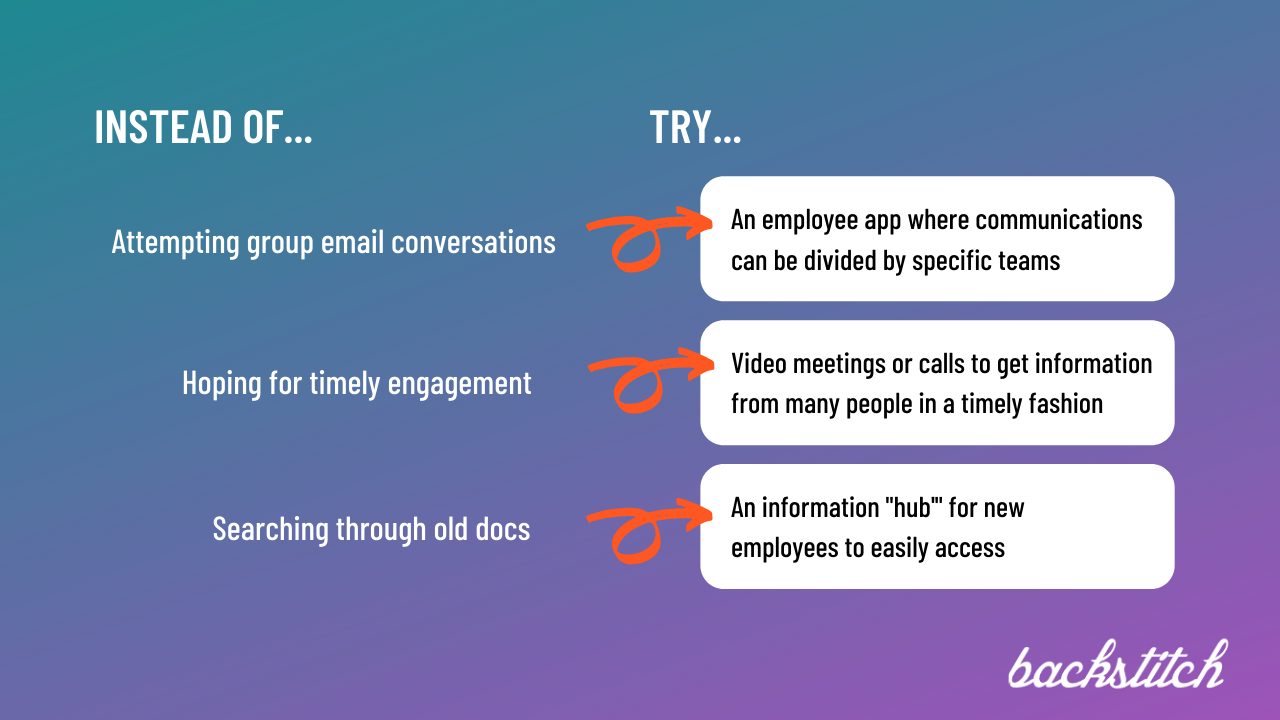Although mobile devices and other forms of technology continue to advance, over 90 percent of American companies still use email as their main form of communication.
Because email is still widely used, it is important for companies to continue to include it in their communication plan. However, as employees’ communication preferences change, companies should consider other mediums as well.
Simply put, in our evolving workforce, email just doesn’t always cut it. We’ve included three situations where utilizing a different form of communication would be better than email.
When Communicating With an Entire Team
Have you ever tried to have a group conversation over email? If so, you know how frustrating and unproductive it can be. Save yourself from unnecessary email chains, unsaveable conversations, and too many notifications by choosing a different method for team communications.
With options like a standard messaging app, or a conversations feature on an employee app, you are able to individually add users to groups. Then, all communications can stay within the group, streamlining the conversation.
More advanced features, like the ability to delete messages and set posting permissions, can also help drive the conversation. Mass company email chains can become bogged down by unrestricted reply-all responses, inundating employees with notifications and hiding the truly important information. Messaging tools with administration features allows your communications team to control the discussion.
When Sharing Timely Information
When you have information that requires immediate employee engagement, email may not be the best choice. It is far too easy for someone to put off new emails or ignore it all together, especially when they are working on other tasks.
For this reason, virtual or face-to-face communications are best for urgent communications. Through these mediums, you are able to share and receive information immediately, rather than waiting for employees’ response.
- Individual communications provide a personal touch and make employees feel more appreciated.
It also offers benefits beyond just operational improvements. Individual communications provide a personal touch and make employees feel more appreciated. It even provides management with direct feedback. Leverage direct communication as a step up from standard emails.
When Sending Old Information to New Employees
When someone new gets hired, it can often take several months to get them up-to-speed. This is often due to substantial content, complex learning curves, and lengthy onboarding processes.
One element of this bottleneck is the process of finding old documents - such as ones that outline company roles - and emailing them to the new employee. A great way to help improve this process is to create a section within an employee app that contains all of the documentation for new hires. By doing this, new employees will have an easily accessible, organized “hub” to find every document they need.
The benefits go beyond just onboarding. Your existing employees now also have a centralized hub where they can access training materials at any time. If they need a quick refresher or to confirm the right process, they can now utilize that resource and improve their productivity as well. 
Using these different internal communication methods, rather than just email, can help you to be as efficient as possible. To learn other ways in how you can improve your internal communication, contact us today.
For more tips on how to improve your internal communications,

